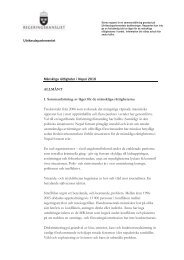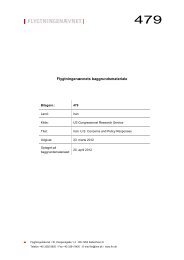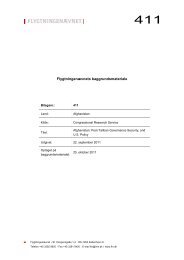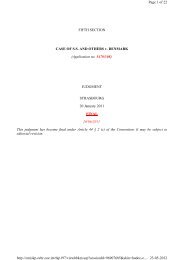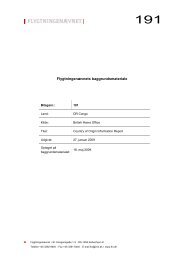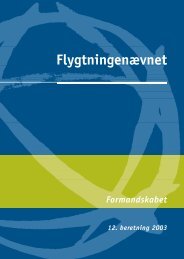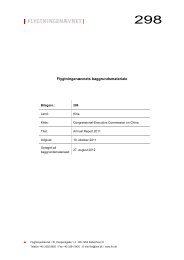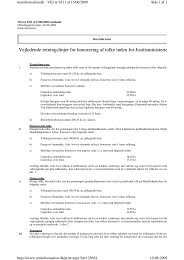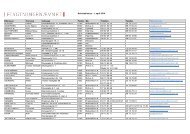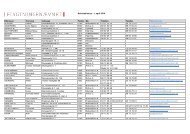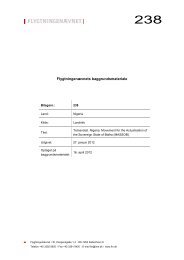Annual Report - National Human Rights Commission
Annual Report - National Human Rights Commission
Annual Report - National Human Rights Commission
Create successful ePaper yourself
Turn your PDF publications into a flip-book with our unique Google optimized e-Paper software.
Research Studies and Projects<br />
○ ○ ○ ○ ○ ○ ○ ○ ○ ○ ○ ○ ○ ○ ○ ○ ○ ○ ○ ○ ○ ○ ○ ○ ○ ○ ○ ○ ○ ○ ○ ○ ○ ○ ○ ○ ○ ○ ○ ○ ○ ○ ○ ○ ○ ○ ○ ○ ○ ○ ○ ○ ○ ○ ○ ○ ○ ○ ○ ○ ○<br />
○<br />
processing activities and those falling in the age group of 8 to 14 years engaged in beedi rolling<br />
activities from 10 villages which covers about 40% of the villages where beedis are being made.<br />
In addition to this, information has also been elicited from the parents of child labourers,<br />
contractors, employers, panchayat functionaries, school teachers, block development authorities,<br />
sub-divisional officials and district social welfare officials.<br />
12.16 The CSRA has submitted its interim report to the <strong>Commission</strong>. Some of the highlights<br />
of the interim report are that children are the worst sufferers as they get minimum wages of<br />
Rs.5/- for making 1,000 beedis per day. Most of the families whose children make beedis<br />
live below the poverty line. The principal employers work through their contractors who in<br />
turn employ workers in a village or a cluster of villages. About 10% of the beedis rolled by<br />
the children are arbitrarily taken away as ‘standard deduction’ by the contractor on the<br />
pretext of replacing defective beedis made by children. This results in deduction of daily<br />
wages of children. For this research, the NHRC has sanctioned financial assistance of<br />
Rs.1,88,000/-.<br />
C] Freedom Mortgaged and Future Abandoned: Bonded<br />
Child Labour in Karnataka’s Silk Industry<br />
12.17 The <strong>Commission</strong> has entrusted the above research study to the Institute of Social<br />
and Economic Change, Bangalore. The main aim of the research is to analyze the household<br />
conditions contributing to the occurrence of bonded child labour in the silk industry of<br />
Karnataka and thereby make an overall assessment of the magnitude of bonded child labour<br />
engaged in sericulture in Karnataka. In addition to this, it would analyze the policies and<br />
programmes of the Government and non-governmental organizations in promoting child<br />
rights and eliminating bonded child labour in the silk industry. The total cost of the study<br />
would be Rs.3,60,367/-.<br />
D] Pilot Study of the Socio-Economic, Political and Cultural<br />
Status of Dalit Women in Haryana<br />
12.18 The <strong>Commission</strong> had reported in its preceding annual report that it had approved a Pilot<br />
Study entitled “Socio-Economic, Political and Cultural Status of Dalit Women in Haryana”<br />
submitted by Maharshi Dayanand University, Rohtak (Haryana). The objectives of the study<br />
are to –<br />
●<br />
survey the socio-cultural and economic status of dalit women through field studies in selected<br />
districts in the State of Haryana;<br />
●<br />
identify the impediments faced by the dalit women in attaining all round development in<br />
social, economic and political field;<br />
<strong>National</strong> <strong>Human</strong> <strong>Rights</strong> <strong>Commission</strong> <strong>Annual</strong> <strong>Report</strong> - 2004-2005<br />
159<br />
AR-Chapter-1-19-10-6-06.p65<br />
179<br />
7/17/06, 6:30 PM



